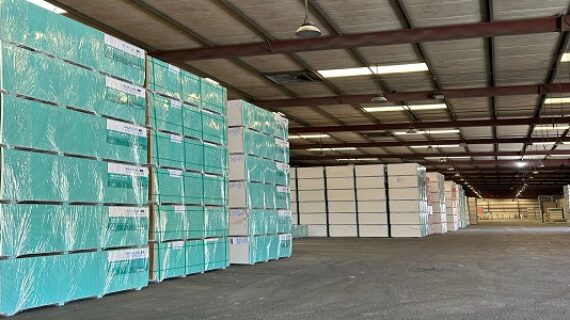Everything You Need to Know About Wall Sheathing
Unseen and often hidden beneath the surface, wall sheathing stands as the unsung hero of sturdy and energy-efficient buildings. Like a protective shield, it offers essential benefits, providing structural strength, insulation, and protection from external elements. As a leading building material provider, Mada Gypsum recognizes the vital role of this process in constructing durable and eco-conscious structures.
Whether for residential or commercial construction, understanding wall sheathing and its various options is vital for constructing high-quality buildings that stand the test of time.
What is Wall Sheathing and How Does it Work?
Wall sheathing is the covering material for a building’s exterior walls. It acts as a protective barrier, guarding against moisture, wind, and environmental elements. Moreover, it enhances the building’s overall strength and stability.
Advantages of Using Wall Sheathing in Construction
- Wall sheathing provides rigidity, reducing deformation and cracks, and enhances impact resistance and occupant safety in construction.
- It contributes to energy efficiency by preventing air leaks and reducing heat transfer.
- Creating a continuous insulation layer maintains indoor temperature, lowering energy bills and carbon footprint, making it eco-friendly.
Exploring Wall Sheathing Options
There are several wall sheathing options available in the market today, each with its unique characteristics and applications.
- Glass Mat Sheathing Boards
One of the advanced wall sheathing options gaining popularity is glass mat sheathing. This is a high-performance, light weight solution that offers exceptional resistance to moisture, mold, and fire with ease of installation (score & snap). Its unique composition ensures long-lasting protection for buildings, making it an ideal choice for construction projects in Saudi Arabia. - Plywood Sheathing: Pros and Cons for Different Construction Projects
Plywood sheathing is a popular choice due to its strength, durability, and ease of installation. It is suitable for various construction projects, ranging from residential homes to commercial buildings. However, it is essential to consider the wood’s vulnerability to fire and moisture, requiring proper sealing and maintenance. - Oriented Strand Board (OSB): A Practical and Versatile Choice
OSB is another commonly used sheathing material known for its affordability and versatility. It offers excellent performance in load-bearing applications and can withstand moderate moisture exposure. However, it is crucial to ensure proper waterproofing to prevent potential issues. - Fiberboard Sheathing: Characteristics and Applications in Various Buildings
Fiberboard sheathing is made from wood fibers and offers good insulation properties. It is commonly used in locations with milder climates and moderate moisture levels. It is essential to assess the climate and environmental conditions before opting for fiberboard sheathing.
Final Thoughts
Wall sheathing is an essential component of any construction project, impacting the building’s strength, energy efficiency, and longevity. By understanding the various options available and their advantages, you can make an informed choice that aligns with your specific building requirements.
When it comes to high-quality wall sheathing options, trust ProGuard from Mada Gypsum, Saudi Arabia for reliable and innovative solutions. Visit our website or contact us to explore our products and find the perfect fit for your construction projects. Build with confidence and invest in a sustainable future with us!







